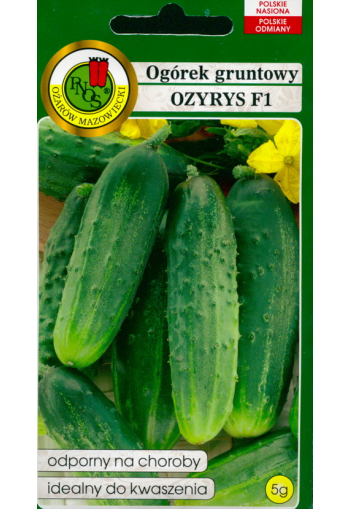Cucumber is a cylindrical gherkin with a bright green peel. The pulp is tender and very tasty. Ideal for canning.
Resistant to various diseases. Requires soil enriched with humus.
* After purchasing the seeds, you need to decide on the method of cultivation, choosing a seedling or seedless method.
The first allows you to get an earlier harvest but requires some trouble.
The second one will require a minimum of effort but does not guarantee an early abundant harvest. In addition, it is not suitable for cold regions, since the main condition for seed germination is soil warming up to +14 degrees.
How to sow seeds for seedlings?
Sowing seeds can be done from April 10th. But before planting, it is advisable to prepare them.
1. From mid-March, it is better to shift the seeds closer to the heaters for heating.
2. In April, select full-weight strong seeds for sowing, without sores and damage.
3. Soak the seeds for 15 minutes in a solution of potassium permanganate (1 g of the substance in half a glass of water). Then rinse with chilled water.
4. Put gauze on a saucer, moisten it, then put the seeds and cover them on top with also wet gauze. Leave for a couple of days by the battery, constantly moisturizing. The seeds should peck a little.
5. Remove the seeds for 24 hours in the main compartment of the refrigerator.
While the seeds are being processed, containers for sowing (or peat cups) and soil should be prepared.
How to sow:
• fill containers with soil;
• make small holes at a distance of 10 cm from each other;
• place 1 seed in holes;
• sprinkle with earth and lightly moisten with watering.
It will take about a week for the first shoots to appear. When the plants acquire 2 true leaves, they can be fed with a solution of nitrophoska.
Water moderately, once a week.
Transplanting.
Approximately 3-4 weeks after sowing, the plants are ready for transplanting into open ground. By this time they should have about 3 leaves and a strong stem.
It is necessary to transplant around the middle of May when the earth warms up to + 15 ° C.
For cucumbers, it is necessary to form beds and spill them with hot water with the addition of copper sulfate (1 teaspoon per 10 litres of water). The next day, make small holes at a distance of about 60 cm from each other and plant seedlings in them. It is good to sprinkle the base of the stems with earth and pour water at room temperature.
Care.
• Weeding. In order for plants to develop well and bear fruit, the soil around them must be cleared of weeds that take away valuable substances.
• Loosening. Free access to oxygen to the roots will favourably affect the growth of cucumbers. To do this, it is enough to gently loosen the soil to a depth of 4 cm about once a week.
• Watering. Cucumbers love moisture, but the main thing here is not to overdo it, so as not to turn the place where plants grow into a swamp...
It is necessary to water with warm settled water: before flowering once a week, and during fruiting - twice as often. If the summer is dry, increase the frequency of watering.
At the same time, water either early in the morning or around 8 pm using the drip irrigation method. It is desirable that water does not fall on the leaves.
• Top dressing. During the season, cucumbers can be fed 3-5 times with organic and mineral fertilizers.
• Harvesting. Timely harvesting will enable new fruits to set and grow faster.











